300-630 Cisco Implementing Cisco Application Centric Infrastructure - Advanced (DCACIA) Free Practice Exam Questions (2025 Updated)
Prepare effectively for your Cisco 300-630 Implementing Cisco Application Centric Infrastructure - Advanced (DCACIA) certification with our extensive collection of free, high-quality practice questions. Each question is designed to mirror the actual exam format and objectives, complete with comprehensive answers and detailed explanations. Our materials are regularly updated for 2025, ensuring you have the most current resources to build confidence and succeed on your first attempt.
Refer to the exhibit.
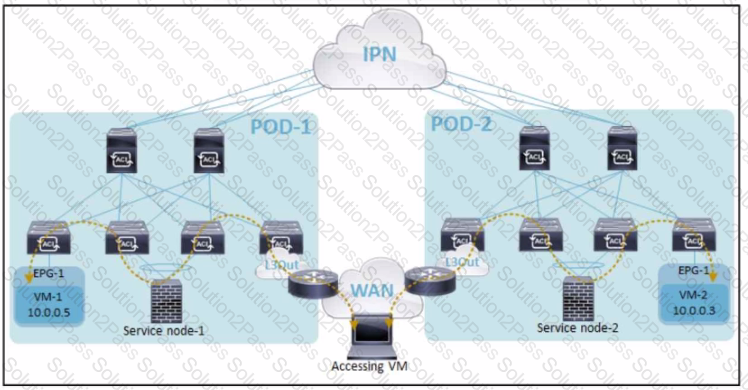
The requirement Is to prefer the local PBR node and redirect the traffic to the remote pod PBR node in the case of catastrophic node failure. Which configuration meets these requirements?
An engineer must implement a full mesh Cisco ACI Multi-Site architecture. Which action must be taken on each spine to accomplish this goal?
What are two characteristics of Cisco ACI and Spanning Tree Protocol interaction? (Choose two.)
Where are STP BPDUs flooded in Cisco ACI fabric?
Which requirement applies to migration from Cisco NX-OS mode to Cisco ACI mode with Cisco Nexus 9000 Series Switches?
An engineer deploys a Cisco ACI Multi-Site Orchestrator for the first time. Drag and drop the actions from the left into the steps on the right to add a site and deploy new Cisco ACI objects to the fabric. Not all actions are used.
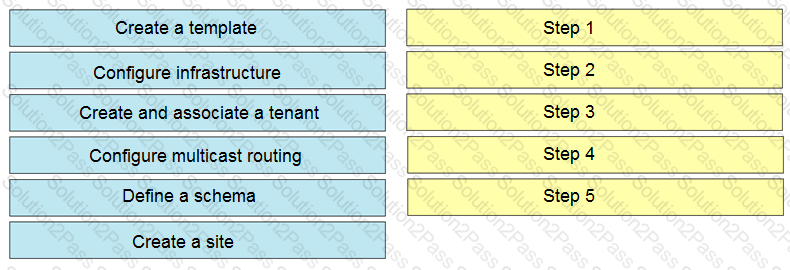
Refer to the exhibit.
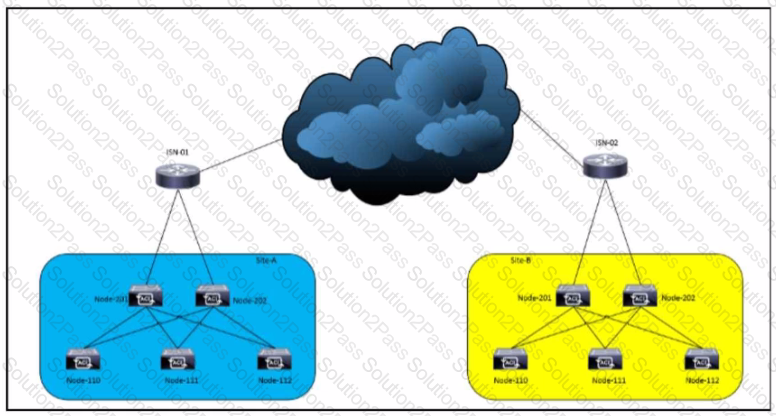
In a Cisco ACI Multi-Site deployment, traffic fails to pass between Site-A and Site-B. and an engineer troubleshoots the link between ISN-01 and Node-201. Which set of actions establishes connectivity?
As part of a newly deployed ACI fabric, a pair of border leaf switches have been deployed to provide shared services for all tenants. The configured L3Out runs OSPF as the routing protocol. The requirement is to advertise the routes from the border leaf switches to the compute leaf switches. Which configuration must be implemented to meet these requirements?
Refer to the exhibit.
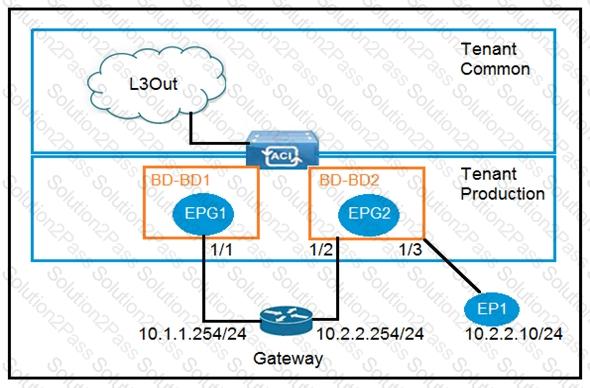
An engineer wants to avoid connectivity problems for the endpoint EP1 when it reaches an external L3Out network through the gateway 10.2.2.254/24. Which two configurations must be implemented in BD-BD2? (Choose two.)
An engineer troubleshoots a Cisco ACI fabric and receives this output.
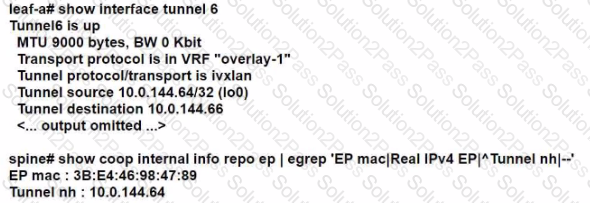
What does tunnel 6 use?
An engineer configures Cisco ACI Multi-Site and must specify the control plane TEP IP for spines. Which statement describes control plane TEP IP in this situation?
Refer to the exhibit.
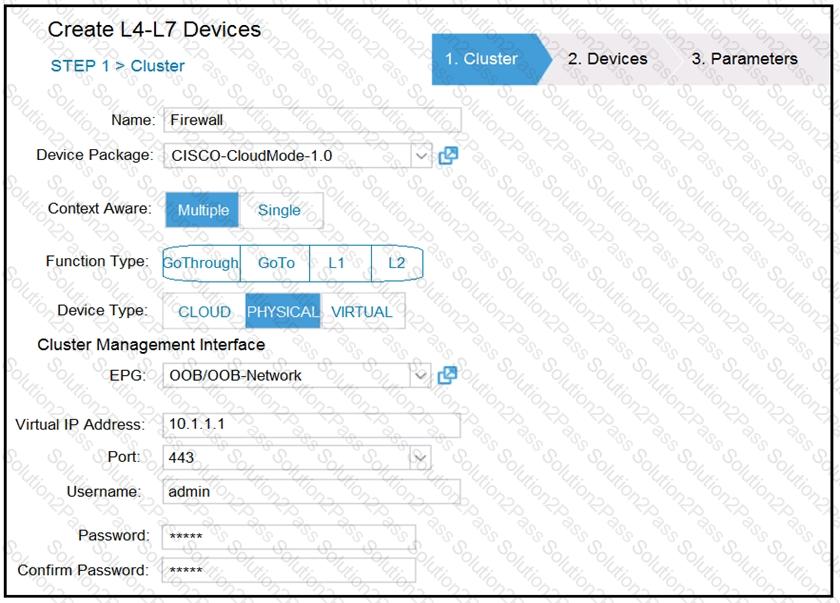
A network engineer configures a Layer 4 to Layer 7 device for an outside routed firewall that is connected to POD-1 inside a Cisco ACI fabric that consists of two pods. All traffic from POD-1 or POD-2 that uses the L3Out should pass through the routed firewall. Which Function Type must be implemented in the service graph for POD-2 to use L3Out?
Refer to the exhibit.
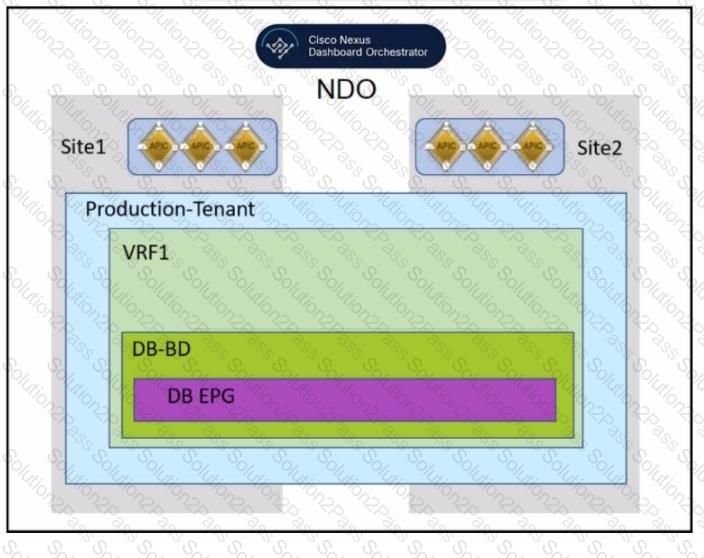
An engineer must allow IP mobility between Site1 and Site2 in a Cisco Nexus Dashboard Orchestrator. The design must meet these requirements:
• A disaster recovery (DR) solution must exist between the sites that do not require vMotion support
• The application must be started at a DR site without having to re-IP the application servers
• The solution must avoid any broadcast storms between the sites.
Which two actions meet these criteria? (Choose two.)
The servers are dual-homed to Cisco ACI Leaf1001 and Leaf1002 and must be connected in an active-active mode. The server NICs do not support LACP. These settings have already been configured on the Cisco ACI:
• interface policy group type Leaf Access Port named active-active-noLACP
• three port selectors: port-1. port-2. and port-3
• AEP called active-active-noLACP has three associated EPGs: EPG-A. EPG-B, and EPG-C
Which action must be taken to migrate the server ports to a different leaf switch in the event of a catastrophic failure?
Refer to the exhibit.

Which two configuration steps are required in ISN for Cisco ACI Multi-Site setup? (Choose two.)

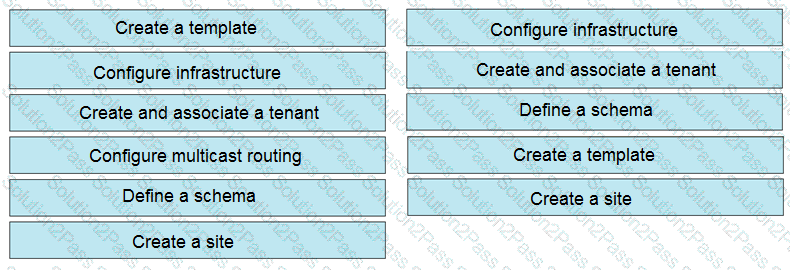 Table
Description automatically generated
Table
Description automatically generated